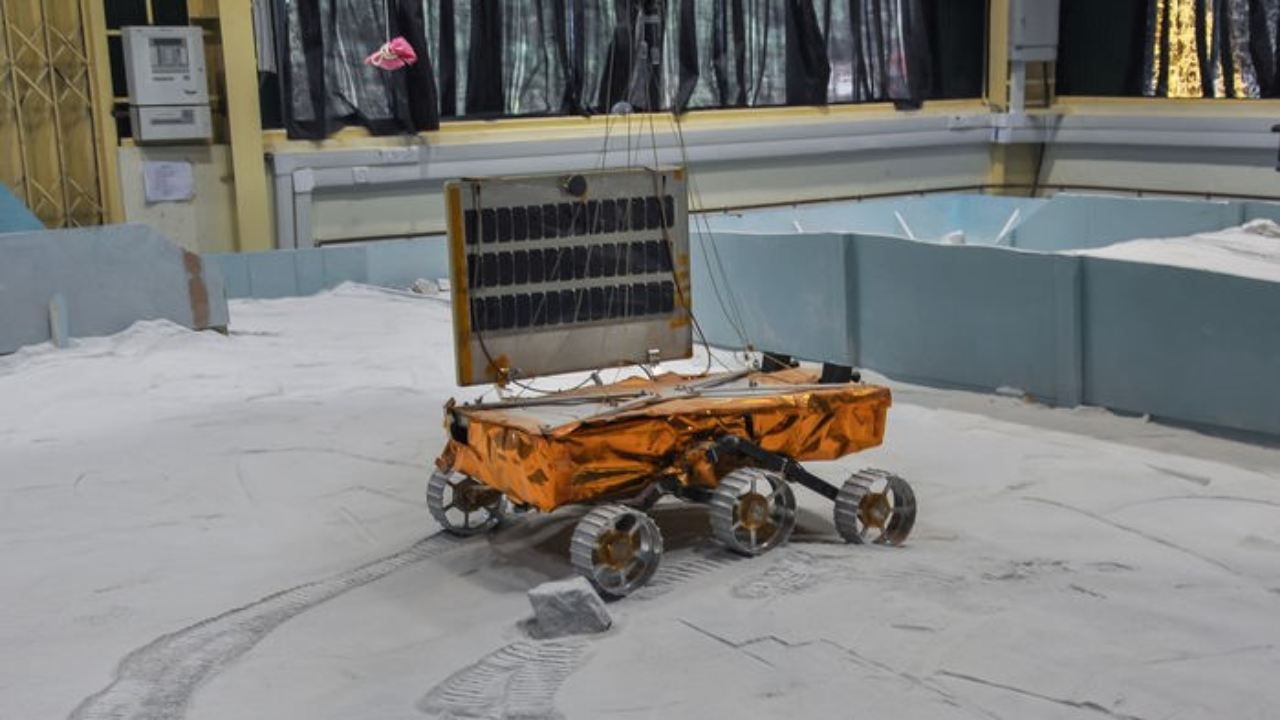The Indian Space Research Organisation
**released the dates** for India’s second mission to the Moon,
**Chandrayaan-2** , on 1 May. The spacecraft — an orbiter, lander and rover, will be launched on a Geosynchronous Satellite Launch Vehicle-MkIII rocket between 9-16 July 2019, according to ISRO Chairman K Sivan. But so far, only one of the three modules of the mission is mission-ready, with plenty more to do before ISRO’s launch window opens in under 60-days’ time. Between the orbiter, lander and rover modules in the mission, only the orbiter has gone through its testing, now awaiting the planned launch date, according
to a report in the Times of India. [caption id=“attachment_5421961” align=“aligncenter” width=“1280”] The Chandrayaan-2 mission’s Pragyan Rover during a mobility test in 2018. Image courtesy: ISRO[/caption] The
**Chandrayaan-2 mission** is the first time ISRO will build a lander and rover for the lunar surface. The Orbiter, on the other hand, is something the agency has successfully engineered in the earlier Chandrayaan-1 mission launched in 2008. The Chandrayaan-2 mission’s rover, named Pragyaan, has seen a hassle-free transition from blueprints to testing, according to
a ToI report. However, the Vikram lander hasn’t fared as well, with multiple
**design changes and accidents** along the way. [caption id=“attachment_6555351” align=“aligncenter” width=“1280”]
Configuration of the Chandrayaan-2 mission rover, lander and orbiter. Image: ISRO[/caption] In a press release, ISRO said that the Orbiter and Lander modules of Chandrayaan-2 will be stacked together as an integrated module and fit into the GSLV Mk-III rocket. The rover will be tucked away inside the Lander, which is named Vikram. Once the spacecraft has been launched into Earth’s orbit by the GSLV, the Chandrayaan-2 integrated module will be released. This spacecraft has its own Orbiter propulsion module which will power the vehicle’s escape out of Earth’s orbit and into the Moon’s. Chandrayaan-2 will be India’s second mission to the moon, and the first to attempt a soft landing. It is a follow-up mission to Chandrayaan-1, which launched in October 2008 and helped provide
**the first confirmation of water (in the form of hydroxyl ions) on the moon** in 2009.
Chandrayaan-2 is the ISRO’s first mission with a planned lander & rover on the lunar surface.
Advertisement
End of Article


)

)
)
)
)
)
)
)
)



